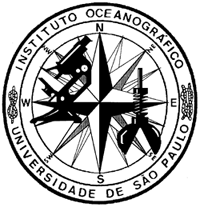Zooplankton community structure was investigated in the estuarine complex of Paranaguá (Southern Brazil) during July 1993 (winter) and February-March 1994 (summer). Copepods belonging to the genera Acartia, Paracalanus, Parvocalanus, Pseudodiaptomus, Temora, Oithona and Euterpina dominated the zooplankton associations, attaining up to 90% of total densities. Pseudodiaptomus richardi was the dominant estuarine copepod in oligohaline stretches with salinities below 15. Estuarine marine species such as Acartia tonsa, Oithona hebes and Oithona oswaldocruzi reached high densities in salinities ranging from 17 to 25. Other abundant estuarine marine species including Acartia lilljeborgi and Pseudodiaptomus acutus occurred in a broader salinity range. Marine euryhaline copepods were found in salinities as low as 15, but were usually more abundant in areas under the influence of coastal waters. Several marine stenohaline species associated with the warm waters of the Brazil Current were recorded in the euhaline areas. Other important zooplanktonic groups in this estuarine complex were tintinnids, appendicularians, cladocerans and meroplanktonic larvae of polychaetes and decapods. Density maxima (up to 82400 org.m-³) were found in the intermediate stretches - in salinities varying from 15 to 30 - corresponding approximately to the distributional pattern of phytoplankton biomass.
Zooplankton; Copepoda; Estuaries; Composition; Abundance; Spatial distribution; Southerrn Brazil
